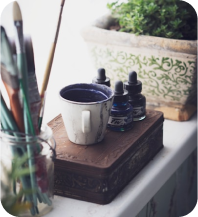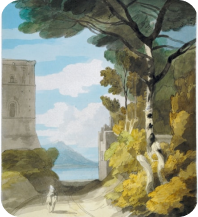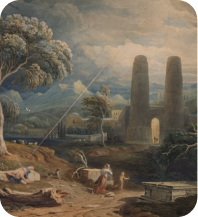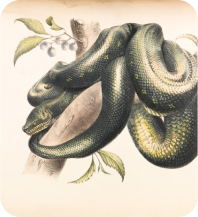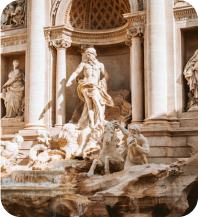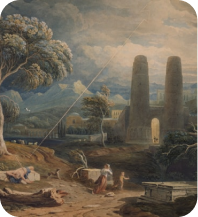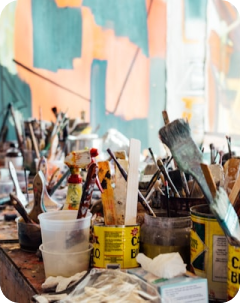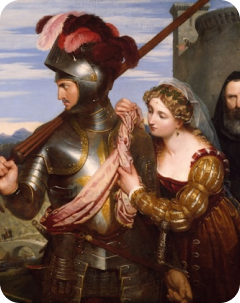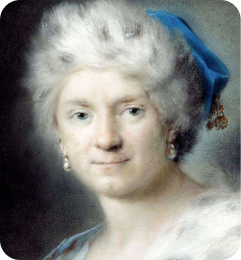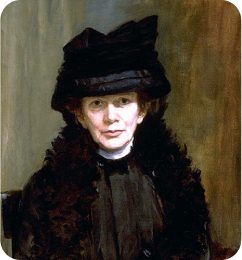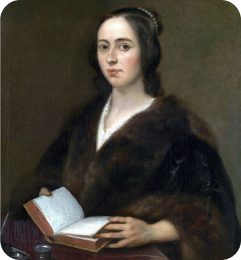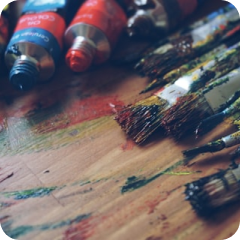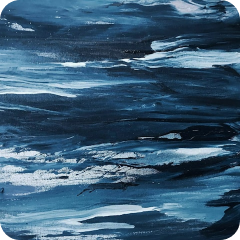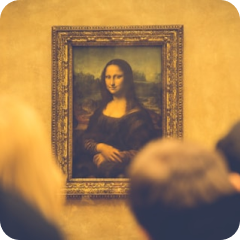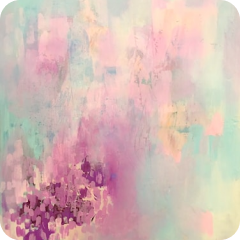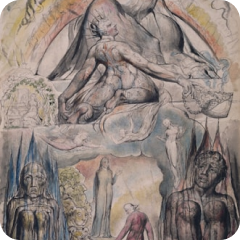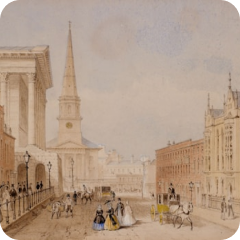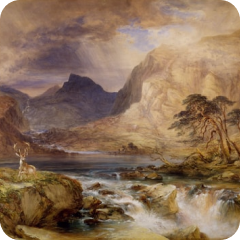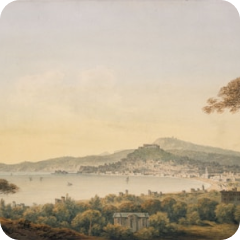Bring Your Walls to Life with Trumovo Canvas Prints
High-quality, customizable canvas art prints for any space

Create Your Custom Canvas in 4 Easy Steps

Step 1
Upload Your Image to the site

Step 2
Choose Size & Style

Step 3
Preview Your Design

Step 4
Place Your Order & Enjoy
;)
Top Categories
;)


Durable Prints
Long-lasting quality with vibrant colors.


Unique Designs
A variety of styles for every taste.


Personalized Art
Upload your image and create custom pieces.
On Sale Now
About Trumovo
Discover our exquisite collection of premium, tailor-made canvas art prints, designed to add a touch of elegance and personality to every room in your home. Whether you're looking to enhance your living room, bedroom, or office space, our art prints offer the perfect blend of style and sophistication, ensuring that each piece complements your unique taste and decor.
Hidden Gems
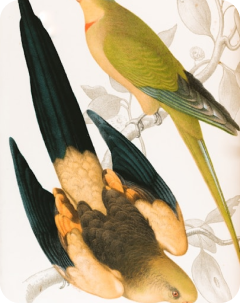
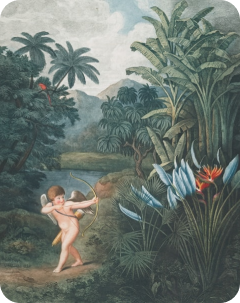
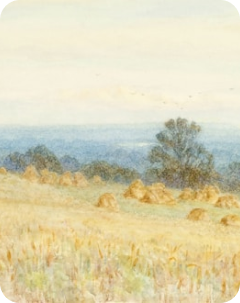

What Our Customers Say

“Lorem ipsum dolor sit amet consectetur. Nunc malesuada varius gravida lacus. Arcu fames vitae neque nulla hendrerit neque augue. Tortor ultricies lobortis consectetur commodo. Pretium eget lacus magna vel in eu amet sit.”

TechGuru88
Apex Solutions

“Lorem ipsum dolor sit amet consectetur. Nunc malesuada varius gravida lacus. Arcu fames vitae neque nulla hendrerit neque augue. Tortor ultricies lobortis consectetur commodo. Pretium eget lacus magna vel in eu amet sit.”

SunnyTraveler92
Luminous Innovations

“Lorem ipsum dolor sit amet consectetur. Nunc malesuada varius gravida lacus. Arcu fames vitae neque nulla hendrerit neque augue. Tortor ultricies lobortis consectetur commodo. Pretium eget lacus magna vel in eu amet sit.”

ArtisticSoul77
Nexus Dynamics

“Lorem ipsum dolor sit amet consectetur. Nunc malesuada varius gravida lacus. Arcu fames vitae neque nulla hendrerit neque augue. Tortor ultricies lobortis consectetur commodo. Pretium eget lacus magna vel in eu amet sit.”

SunnyTraveler92
Luminous Innovations
Custom Canvas Prints & Wall Art The Ultimate Decor Revolution
The realm of interior design has witnessed a remarkable transformation with the emergence of custom canvas prints as the definitive wall art solution. This revolutionary approach to home decoration has fundamentally altered how individuals perceive and interact with their living spaces. Unlike traditional framed photographs or mass-produced artwork, custom canvas prints offer an unparalleled level of personalization that resonates deeply with modern homeowners seeking authentic self-expression.
The phenomenon of canvas printing represents more than a mere decorative choice; it embodies a cultural shift toward individualized living environments. Contemporary households increasingly gravitate toward bespoke solutions that reflect their unique narratives, experiences, and aesthetic preferences. This movement away from generic wall coverings toward personalized artistic expressions signifies a broader societal trend emphasizing authenticity and emotional connection within domestic spaces.
Canvas printing has democratized access to high-quality wall art, eliminating the traditional barriers associated with original paintings or limited-edition prints. This accessibility has empowered countless individuals to transform their homes into personalized galleries showcasing their most meaningful memories, artistic visions, and creative inspirations. The versatility of canvas as a medium accommodates diverse artistic styles, from photorealistic reproductions to abstract interpretations, ensuring compatibility with virtually any design aesthetic.
The durability factor associated with custom canvas prints distinguishes them from alternative wall art options. Premium canvas materials resist fading, moisture damage, and physical wear, making them suitable for long-term display in various environmental conditions. This longevity ensures that the investment in custom canvas prints yields enduring value, both aesthetically and financially.
Furthermore, the production process of custom canvas prints has evolved to incorporate environmentally conscious practices, appealing to sustainability-minded consumers. Modern printing facilities utilize eco-friendly inks and responsibly sourced materials, aligning with contemporary values regarding environmental stewardship. This ecological consideration adds another dimension to the appeal of canvas prints, allowing consumers to enhance their homes while maintaining their environmental commitments.
Understanding the Fundamentals of Canvas Print Creation
The process of creating custom canvas prints involves sophisticated printing methodologies that transform digital images into tangible artistic expressions. This transformation begins with high-resolution digital files that serve as the foundation for the printing process. The quality of the source image directly influences the final product's clarity, color accuracy, and overall visual impact.
Professional-grade inkjet printers equipped with archival-quality pigment inks execute the printing process. These specialized inks penetrate the canvas fibers, creating a permanent bond that ensures color stability and resistance to environmental factors. The precision of modern printing equipment allows for exceptional detail reproduction, capturing subtle gradations, fine textures, and minute details that might be lost in traditional printing methods.
Canvas selection plays a crucial role in determining the final product's characteristics. Cotton canvas offers superior color absorption and archival qualities, making it ideal for premium applications where longevity is paramount. Polyester canvas provides excellent color vibrancy and moisture resistance, making it suitable for environments with varying humidity levels. Blend canvases combine the advantages of both materials, offering balanced performance across multiple criteria.
The stretching process represents a critical phase in canvas print production. Skilled craftspeople meticulously stretch the printed canvas over rigid frames, ensuring uniform tension that prevents sagging or distortion over time. The corner construction requires particular attention, as improper folding or securing can lead to premature wear or aesthetic imperfections. Professional stretching ensures that the canvas maintains its structural integrity and visual appeal throughout its lifespan.
Quality control measures throughout the production process guarantee that each custom canvas print meets stringent standards for color accuracy, print quality, and structural soundness. These measures include color calibration, print inspection, and frame stability testing, ensuring that customers receive products that exceed their expectations.
The Artistic Evolution of Canvas as a Medium
Canvas has served as the preferred medium for master painters throughout art history, and its adaptation to modern printing represents a natural evolution of this tradition. Renaissance masters recognized canvas's superior qualities, including its ability to hold paint securely, resist cracking, and provide an ideal surface texture for artistic expression. These same qualities that attracted historical artists make canvas an excellent medium for contemporary printing applications.
The texture of canvas contributes significantly to the visual appeal of printed images. The subtle weave pattern creates a tactile quality that distinguishes canvas prints from flat photographic prints. This texture adds depth and dimension to images, creating visual interest that changes subtly as viewing angles shift. The interplay between light and the canvas surface enhances the three-dimensional quality of printed images, making them appear more lifelike and engaging.
Contemporary artists have embraced canvas printing as a legitimate artistic medium, incorporating it into mixed-media works and standalone pieces. This acceptance within the artistic community validates canvas printing as a serious form of artistic expression rather than merely a reproduction method. The ability to print original digital artwork directly onto canvas has opened new creative possibilities for artists working in digital mediums.
The archival qualities of properly produced canvas prints ensure that they can serve as permanent artistic records. Museum-quality canvas prints can last centuries when properly cared for, making them suitable for preserving important cultural, historical, or personal imagery. This permanence adds weight to the decision to create custom canvas prints, as they represent lasting investments in personal or institutional collections.
Color reproduction capabilities of modern canvas printing have reached unprecedented levels of accuracy and vibrancy. Advanced color management systems ensure that printed colors closely match original digital files, while the canvas substrate enhances color saturation and depth. This fidelity allows for faithful reproduction of photographic images as well as accurate representation of digital artwork.
Innovative Design Concepts for Custom Canvas Prints
The versatility of custom canvas prints enables countless creative applications that extend far beyond traditional photography reproduction. Mixed-media compositions combining photography, digital art, and typography create unique visual narratives that tell complex stories through layered imagery. These composite pieces allow for sophisticated artistic expression that reflects the multifaceted nature of contemporary life.
Panoramic canvas prints offer dramatic visual impact by capturing expansive scenes in formats that traditional framing cannot accommodate. These wide-format pieces create immersive experiences that transport viewers to captured locations, making them ideal for showcasing travel photography, architectural subjects, or natural landscapes. The horizontal orientation of panoramic prints complements modern interior design trends favoring clean lines and expansive visual elements.
Triptych and multi-panel configurations divide single images across multiple canvas panels, creating dynamic compositions that add movement and visual interest to wall displays. This approach allows for creative interpretation of single images while providing flexibility in arrangement and spacing. The separation between panels creates natural pause points that guide the viewer's eye through the composition, enhancing the overall viewing experience.
Abstract interpretations of photographic images open creative possibilities for those seeking non-representational wall art. Digital manipulation techniques can transform ordinary photographs into artistic abstractions that complement contemporary design aesthetics while maintaining personal significance. These interpretations bridge the gap between personal photography and abstract art, creating pieces that function both as decoration and meaningful reminders.
Textural enhancement effects can be applied during the printing process to emphasize the canvas medium's inherent characteristics. These effects range from subtle texture overlays that enhance the canvas weave to more pronounced treatments that create painterly qualities reminiscent of traditional oil paintings. Such enhancements blur the line between photography and painting, creating hybrid artworks that combine the best aspects of both mediums.
Environmental Considerations in Canvas Print Production
Modern canvas print production increasingly emphasizes environmental responsibility through sustainable material sourcing and eco-friendly production processes. Responsible manufacturers prioritize canvas materials derived from sustainably managed cotton farms or recycled polyester sources, reducing the environmental impact associated with raw material extraction and processing.
Water-based ink formulations have largely replaced solvent-based alternatives in professional canvas printing facilities. These inks eliminate harmful volatile organic compounds from the production process while maintaining excellent color quality and durability. The reduction in chemical emissions benefits both production workers and the broader environment, aligning canvas print production with contemporary sustainability standards.
Energy-efficient printing equipment and renewable energy sources power modern production facilities, further reducing the carbon footprint associated with custom canvas print creation. LED curing systems and optimized printing processes minimize energy consumption while maintaining production quality and speed. These improvements demonstrate the industry's commitment to environmental stewardship without compromising product quality.
Packaging innovations incorporate recycled and biodegradable materials, reducing waste associated with product shipping and delivery. Minimalist packaging designs eliminate unnecessary materials while ensuring adequate protection during transit. These considerations extend the environmental benefits of canvas prints beyond the production process to encompass the entire product lifecycle.
Local production capabilities reduce transportation-related emissions while supporting regional economies. Distributed production networks allow customers to receive custom canvas prints from nearby facilities, minimizing shipping distances and associated environmental impacts. This localization strategy benefits both environmental and economic sustainability goals.
The Psychology of Personalized Wall Art
The psychological impact of personalized wall art extends far beyond mere aesthetic enhancement, influencing mood, memory, and overall well-being within living spaces. Custom canvas prints featuring meaningful imagery create emotional anchors that transform houses into homes by establishing personal connections with the environment. These visual reminders of cherished memories, relationships, and experiences contribute to a sense of belonging and emotional security.
Color psychology plays a significant role in how custom canvas prints influence mood and atmosphere within rooms. Warm color palettes featuring reds, oranges, and yellows create energizing environments that promote social interaction and activity. Cool color schemes incorporating blues, greens, and purples foster tranquility and contemplation, making them ideal for bedroom and meditation spaces. Understanding these psychological effects allows for strategic selection of imagery and color schemes that support desired emotional outcomes.
Memory enhancement occurs when individuals surround themselves with visual reminders of positive experiences and relationships. Custom canvas prints featuring family photographs, travel destinations, or achievement milestones serve as daily affirmations of personal history and accomplishment. This constant visual reinforcement strengthens emotional connections to these memories while promoting positive self-reflection.
Stress reduction benefits emerge from exposure to calming imagery displayed through custom canvas prints. Natural landscapes, peaceful water scenes, and serene outdoor environments can lower cortisol levels and promote relaxation when viewed regularly. This therapeutic effect makes custom canvas prints valuable tools for creating restorative home environments that support mental health and well-being.
Identity expression through personalized wall art allows individuals to communicate their values, interests, and personality to visitors while reinforcing their self-concept. The curation process involved in selecting images for custom canvas prints requires introspection about what matters most, leading to increased self-awareness and intentional living.
Commercial Applications and Business Benefits
Commercial establishments increasingly recognize the value of custom canvas prints for enhancing customer experiences and reinforcing brand identity. Restaurants utilize food photography and local imagery to create inviting atmospheres that reflect their culinary philosophy and community connections. Hotels and hospitality venues employ custom canvas prints featuring local landmarks and cultural elements to provide guests with immersive regional experiences.
Corporate offices leverage custom canvas prints to display company values, achievements, and team photographs, fostering organizational pride and cohesion among employees. These visual representations of corporate culture contribute to employee engagement while communicating company identity to visitors and clients. The professional appearance of canvas prints elevates the perceived quality of business environments.
Retail spaces employ custom canvas prints as powerful marketing tools that showcase products, convey brand messages, and create memorable shopping experiences. The large format capabilities of canvas printing allow for impactful displays that capture customer attention and communicate complex information quickly and effectively. These applications demonstrate the versatility of canvas prints beyond residential decoration.
Healthcare facilities utilize calming imagery printed on canvas to create therapeutic environments that support patient comfort and healing. Research indicates that exposure to nature imagery and peaceful scenes can reduce anxiety and promote recovery, making custom canvas prints valuable components of healthcare interior design strategies.
Museums and cultural institutions employ custom canvas prints for temporary exhibitions and permanent displays where original artworks are unavailable or unsuitable for public display. High-quality reproductions allow broader access to important cultural artifacts while preserving originals from damage associated with public exposure.
Aesthetic Principles for Canvas Print Design
Successful custom canvas print design requires understanding fundamental aesthetic principles that govern visual composition and viewer engagement. These principles, derived from centuries of artistic tradition, apply equally to photographic and digital artwork intended for canvas reproduction. Mastery of these concepts enables creation of compelling visual pieces that enhance rather than overwhelm interior spaces.
The rule of thirds provides a foundational framework for creating visually balanced compositions. Dividing the canvas area into nine equal sections using imaginary horizontal and vertical lines, important compositional elements should align with these division points or lines. This placement creates natural focal points that guide viewer attention while maintaining visual harmony within the overall composition.
Color harmony considerations become particularly important when selecting images for canvas reproduction. Complementary color schemes create dynamic visual tension that energizes spaces, while analogous color arrangements promote tranquility and cohesion. Understanding color relationships allows for intentional mood creation through strategic image selection and post-processing decisions.
Scale relationships between canvas prints and surrounding architectural elements determine visual impact and spatial harmony. Oversized prints can overwhelm intimate spaces, while undersized pieces may appear insignificant in expansive rooms. Careful consideration of proportional relationships ensures that custom canvas prints enhance rather than dominate their environments.
Lighting interaction with canvas surfaces affects both color perception and overall visual impact. The matte finish characteristic of canvas prints eliminates reflective glare while enhancing color depth and saturation. Strategic placement relative to natural and artificial light sources maximizes these beneficial characteristics while avoiding potential fading from direct sunlight exposure.
Visual weight distribution across multi-panel installations requires careful planning to achieve balanced compositions. Varying panel sizes, spacing intervals, and content distribution can create dynamic arrangements that maintain viewer interest while preserving overall harmony. These considerations become particularly important in large-scale installations spanning significant wall areas.
Photographic Considerations for Canvas Reproduction
The transition from digital photography to canvas print requires specific considerations to ensure optimal reproduction quality and visual impact. Understanding these factors enables photographers and print customers to maximize the potential of their source images while avoiding common pitfalls that compromise final results.
Resolution requirements for canvas printing exceed those necessary for traditional photographic prints due to the viewing distances typical of wall-mounted artwork. While standard photographs viewed at close range may appear sharp at moderate resolutions, canvas prints displayed on walls require higher pixel densities to maintain detail clarity at normal viewing distances. Professional canvas printing facilities typically recommend minimum resolutions based on final print dimensions.
Dynamic range considerations become crucial when preparing images for canvas reproduction. Canvas substrates and printing inks have specific capabilities for reproducing extreme highlights and shadows, requiring careful attention to tonal mapping during image preparation. Proper exposure and post-processing ensure that important details remain visible throughout the tonal range without appearing flat or lacking contrast.
Color space management ensures accurate color reproduction from digital files to printed canvas. Wide-gamut monitors and proper color profiles enable precise preview capabilities, while understanding printer color capabilities prevents disappointment when certain colors cannot be accurately reproduced. Professional color management workflows maintain consistency from capture through final printing.
Sharpening strategies for canvas printing differ from those appropriate for other output mediums. The texture of canvas substrate influences how sharpening artifacts appear in the final print, requiring specialized sharpening techniques that enhance detail without creating unnatural edge effects. Proper sharpening enhances the perceived quality of canvas prints while maintaining natural appearance.
File format considerations impact both image quality and workflow efficiency. Uncompressed formats preserve maximum image information for high-quality reproduction, while compressed formats may introduce artifacts that become visible in large-format canvas prints. Understanding the trade-offs between file size and quality enables informed decisions about image preparation and storage.
Interior Design Integration Strategies
Successfully incorporating custom canvas prints into existing interior design schemes requires strategic planning that considers architectural elements, furniture arrangements, and overall aesthetic goals. This integration process involves more than simply selecting wall space; it requires understanding how canvas prints interact with other design elements to create cohesive and visually appealing environments.
Room function considerations influence both image selection and placement decisions for custom canvas prints. Living areas benefit from engaging imagery that promotes conversation and social interaction, while bedrooms require calming visuals that support rest and relaxation. Workspace environments call for inspiring or motivating imagery that enhances productivity without creating distraction.
Architectural feature enhancement through strategic canvas print placement can emphasize positive aspects of room design while minimizing less desirable elements. Large canvas prints can visually expand small spaces, while carefully positioned pieces can draw attention away from architectural imperfections or awkward proportions. Understanding these spatial relationships enables canvas prints to actively improve perceived room characteristics.
Furniture relationship management ensures that canvas prints complement rather than compete with existing furnishings. Scale relationships between prints and furniture pieces create visual balance, while color coordination maintains harmony throughout the space. Strategic placement can unify disparate furniture elements through common visual themes or color palettes established by canvas print selections.
Lighting design integration maximizes the visual impact of custom canvas prints while ensuring proper illumination for viewing and safety. Picture lights, track lighting, and ambient lighting systems can be positioned to highlight canvas prints while minimizing glare and heat exposure. Proper lighting design enhances color perception and creates dramatic effects that elevate the overall aesthetic impact.
Traffic flow considerations ensure that canvas prints enhance rather than obstruct movement through spaces. Placement decisions should account for door swings, furniture access, and natural movement patterns within rooms. Well-placed canvas prints can actually improve traffic flow by creating visual anchors that define functional areas within open floor plans.
Cultural Significance and Social Impact
Custom canvas prints have emerged as powerful tools for cultural expression and social connection, enabling individuals and communities to preserve and share their unique stories, traditions, and experiences. This democratization of art creation and display has profound implications for cultural preservation and social cohesion within diverse communities.
Family history preservation through custom canvas prints creates tangible connections to ancestral heritage and generational memories. These visual records serve multiple purposes: they honor family legacies, educate younger generations about their history, and create gathering points for family storytelling and bonding. The permanence of canvas prints ensures that these important family documents remain accessible and engaging for future generations.
Community identity expression finds powerful voice through collaborative canvas print projects that showcase local landmarks, historical events, and cultural celebrations. These community-focused initiatives strengthen social bonds while preserving important local narratives that might otherwise be lost. Public display of community-created canvas prints fosters pride and shared identity among residents.
Cultural bridge-building occurs when diverse communities use custom canvas prints to share their traditions and perspectives with broader audiences. These visual narratives promote understanding and appreciation across cultural boundaries while celebrating the richness of human diversity. Educational institutions and cultural centers increasingly employ canvas prints as tools for cross-cultural communication and learning.
Therapeutic applications of custom canvas print creation provide meaningful outlets for emotional expression and healing. Art therapy programs incorporate canvas printing as a means for individuals to process traumatic experiences, celebrate personal growth, and establish positive self-narratives. The tactile nature of canvas and the permanence of the medium contribute to the therapeutic value of these creative activities.
Memorial and commemorative functions of custom canvas prints offer dignified ways to honor departed loved ones and significant life events. These permanent tributes provide comfort and remembrance while celebrating the positive impact of individuals and experiences. The respectful presentation possible with canvas prints makes them appropriate for both private homes and public memorial spaces.
Market Trends and Consumer Preferences
The custom canvas print market has experienced substantial growth driven by changing consumer preferences toward personalized home decoration and the increasing accessibility of high-quality printing services. This expansion reflects broader trends in consumer behavior emphasizing individual expression and experiential purchasing decisions over mass-market alternatives.
Demographic analysis reveals that custom canvas prints appeal to diverse age groups, with particularly strong adoption among millennials and Generation X consumers who value personalization and authentic self-expression. These demographics prioritize experiences over material possessions, making custom canvas prints attractive as meaningful investments that capture and display important life moments.
Size preference trends indicate growing demand for larger format canvas prints as consumers seek to create dramatic focal points within their homes. This shift toward larger prints reflects changing architectural styles featuring larger wall spaces and more open floor plans that can accommodate substantial artwork. Additionally, improved affordability of large-format printing has made these sizes accessible to broader consumer segments.
Seasonal demand patterns show increased activity during traditional gift-giving periods, with custom canvas prints serving as meaningful presents for weddings, graduations, anniversaries, and holidays. The personal nature of custom prints makes them particularly valued as gifts that demonstrate thoughtfulness and consideration for the recipient's interests and memories.
Geographic preferences vary based on cultural factors, climate conditions, and architectural styles prevalent in different regions. Coastal areas show preference for ocean and beach imagery, while mountain regions favor landscape and outdoor recreation themes. Urban environments tend toward abstract and architectural subjects that complement contemporary design aesthetics.
Price sensitivity analysis indicates that consumers view custom canvas prints as value investments rather than commodity purchases. Quality considerations outweigh pure price competition, with consumers willing to pay premiums for superior materials, printing quality, and customer service. This preference for quality over cost reflects the long-term nature of canvas print purchases and their intended permanence within homes.
Production Workflow and Quality Assurance
Professional custom canvas print production follows rigorous workflows designed to ensure consistent quality and customer satisfaction from order receipt through final delivery. These systematic approaches incorporate multiple quality checkpoints and verification steps that prevent errors and guarantee that finished products meet established standards.
Order processing begins with thorough review of submitted image files to identify potential quality issues that could affect final print results. Professional technicians assess resolution adequacy, color accuracy, and compositional elements that might benefit from adjustment or enhancement. This preliminary review allows for proactive communication with customers regarding optimization opportunities.
Color calibration procedures ensure accurate color reproduction across all production equipment and environmental conditions. Regular calibration of monitors, printers, and measurement devices maintains consistency and prevents color drift that could affect print quality. Professional color management systems track calibration status and alert technicians when adjustments are needed.
Print production monitoring includes real-time quality assessment during the printing process to identify and correct any issues before they affect final products. Automated systems monitor ink flow, print head performance, and environmental conditions while human operators conduct visual inspections to ensure optimal results. This dual approach combines technological precision with human judgment.
Stretching and finishing procedures follow standardized protocols that ensure consistent frame construction and canvas tension across all products. Skilled craftspeople utilize specialized tools and measurement devices to achieve uniform results while maintaining the structural integrity necessary for long-term display. Quality standards govern corner construction, edge finishing, and overall presentation.
Final inspection processes verify that completed canvas prints meet all quality criteria before packaging and shipment. This comprehensive review includes assessment of print quality, frame construction, and overall presentation standards. Products that fail to meet these criteria undergo correction or replacement to ensure customer satisfaction.
Emerging Market Segments and Niche Applications
The versatility of custom canvas printing has spawned numerous specialized market segments that serve specific consumer needs and preferences. These niche applications demonstrate the adaptability of canvas printing while creating opportunities for specialized service providers and unique product offerings.
Pet portrait canvas prints represent a rapidly growing segment as pet ownership increases and emotional bonds between humans and animals strengthen. These specialized prints require particular attention to capturing animal characteristics and expressions while accounting for the unique challenges of pet photography. Professional pet photographers increasingly offer canvas printing services as integrated solutions.
Sports memorabilia reproduction on canvas provides fans with museum-quality displays of their favorite teams and athletes. Historical sports photography, ticket stubs, and program covers can be combined into composite pieces that celebrate significant sporting moments and personal fandom. These pieces often incorporate multiple images and text elements to create comprehensive commemorative displays.
Architectural photography canvas prints serve both decorative and documentary purposes for architects, contractors, and building owners. These prints showcase completed projects while serving as portfolio pieces and client gifts. The large format capabilities of canvas printing make it ideal for displaying architectural details and overall building compositions.
Food photography canvas prints cater to culinary enthusiasts and restaurant owners who want to display appetizing imagery in kitchens and dining areas. These prints require exceptional color accuracy to reproduce the subtle hues and textures that make food photography appealing. Professional food photographers increasingly offer canvas printing services as value-added options.
Abstract and digital art canvas prints provide emerging artists with affordable means to produce and display their work without the traditional barriers associated with gallery representation. Online platforms enable artists to offer custom canvas print services directly to consumers, democratizing the art market while providing collectors with unique pieces.
Geographic and Cultural Variations in Canvas Print Preferences
Regional differences in custom canvas print preferences reflect local cultural values, aesthetic traditions, and environmental factors that influence artistic tastes and decorative choices. Understanding these variations enables print service providers to better serve diverse markets while respecting cultural sensitivities and preferences.
European markets demonstrate strong preference for classical artistic reproductions and architectural photography that reflects the continent's rich cultural heritage. Renaissance masterpieces, cathedral interiors, and historic cityscapes remain popular subjects for canvas reproduction. The emphasis on historical preservation and cultural continuity influences consumer choices toward timeless imagery that connects contemporary homes with artistic traditions.
Asian markets show growing adoption of custom canvas prints featuring calligraphy, traditional artwork, and nature photography that aligns with philosophical traditions emphasizing harmony between human habitation and natural environments. Cherry blossoms, mountain landscapes, and water features represent popular subjects that bring elements of traditional Asian aesthetics into modern living spaces.
North American preferences tend toward outdoor recreation photography, family portraiture, and contemporary abstract designs that reflect the continent's emphasis on individual expression and outdoor lifestyle. Landscape photography featuring national parks, wilderness areas, and seasonal changes appeals to consumers who value connection with natural environments despite increasingly urban lifestyles.
Australian and New Zealand markets emphasize coastal imagery, unique wildlife photography, and landscapes that showcase the distinctive natural beauty of Oceania. The outdoor lifestyle prevalent in these regions creates strong demand for canvas prints that celebrate the unique flora, fauna, and geological features that define the regional identity.
Latin American preferences incorporate vibrant colors, cultural celebrations, and traditional artistic motifs that reflect the region's rich artistic heritage and community-centered social structures. Religious imagery, festival photography, and family gatherings represent important themes that resonate with cultural values emphasizing family bonds and spiritual connections.
Digital Art Creation for Canvas Printing
The rise of digital art creation has opened new possibilities for custom canvas prints that extend beyond traditional photography reproduction. Digital artists and creative professionals increasingly design artwork specifically for canvas reproduction, taking advantage of the medium's unique characteristics to create compelling visual experiences.
Vector-based artwork translates exceptionally well to canvas printing due to its scalability and clean line reproduction capabilities. These mathematical representations of imagery maintain sharpness at any size, making them ideal for large-format canvas prints. Logo designs, graphic illustrations, and typographic artwork benefit particularly from vector-based creation methods.
Digital painting techniques utilizing pressure-sensitive styluses and professional graphics software enable creation of artwork that mimics traditional painting mediums while maintaining the advantages of digital workflows. These techniques allow for unlimited experimentation and revision without material waste, while final canvas printing provides the tactile qualities associated with traditional artwork.
Photomanipulation and composite imaging create unique artistic expressions that combine multiple source images into cohesive compositions. These techniques enable creation of surreal, fantastical, or conceptual imagery that would be impossible to capture through traditional photography alone. The large format capabilities of canvas printing make these complex compositions particularly impactful.
Typography integration within canvas artwork creates pieces that combine visual imagery with meaningful text elements. Motivational quotes, poetry, and personal mantras can be incorporated into photographic or illustrated backgrounds to create unique wall art that serves both decorative and inspirational purposes. Careful typography selection ensures readability while maintaining artistic integrity.
Color grading and artistic filters enable transformation of ordinary photography into stylized artwork suitable for canvas reproduction. These post-processing techniques can create vintage effects, artistic interpretations, or enhanced reality versions that elevate source material into compelling artistic statements. The texture of canvas enhances these effects by adding depth and visual interest.
Framing and Presentation Alternatives
While traditional gallery-wrap presentations remain popular for custom canvas prints, alternative framing and mounting options provide additional aesthetic choices that suit different design preferences and practical requirements. Understanding these alternatives enables consumers to select presentation methods that best complement their intended applications and environments.
Floating frame systems create the illusion that canvas prints hover within frame boundaries, providing protection and formal presentation while maintaining the modern aesthetic of gallery-wrapped pieces. These systems accommodate standard canvas thicknesses while offering various frame materials and finishes that complement different interior design styles.
Shadow box presentations add dimensional depth to canvas print displays by creating space between the artwork and wall surface. These systems work particularly well for canvas prints that incorporate three-dimensional elements or benefit from dramatic lighting effects. The increased depth creates opportunities for creative lighting schemes that enhance visual impact.
Multi-panel mounting systems enable creation of complex wall installations that combine multiple canvas prints into unified compositions. These systems provide precise alignment capabilities while allowing for easy reconfiguration as design preferences change. Professional mounting hardware ensures secure installation while maintaining aesthetic appeal.
Hanging system innovations eliminate the need for traditional picture wire or sawtooth hangers, providing cleaner installations with improved security and adjustability. French cleat systems, magnetic mounting, and specialized track systems offer professional-grade installation capabilities that accommodate heavy canvas prints while simplifying positioning and leveling.
Portable display solutions enable temporary installations for events, exhibitions, or rental properties where permanent mounting is impractical. Easel systems, portable frames, and temporary hanging solutions provide flexibility while maintaining professional presentation standards. These systems particularly benefit artists and businesses requiring mobile display capabilities.
Color Theory Applications in Canvas Print Design
Effective use of color theory principles enhances the visual impact and emotional resonance of custom canvas prints while ensuring successful integration within existing interior design schemes. Understanding these principles enables informed decision-making during image selection and post-processing phases of canvas print creation.
Warm color palettes featuring reds, oranges, and yellows create energizing environments that promote social interaction and activity. These colors appear to advance visually, making them effective for creating focal points and adding vibrancy to neutral spaces. Custom canvas prints utilizing warm palettes work particularly well in social areas like living rooms and dining spaces.
Cool color schemes incorporating blues, greens, and purples foster calm, contemplative atmospheres suitable for relaxation and concentration. These colors appear to recede visually, making them effective for creating sense of space and tranquility. Bedroom and study areas benefit from custom canvas prints featuring cool color palettes that support their intended functions.
Monochromatic compositions utilize varying shades and tints of single colors to create sophisticated, harmonious displays that emphasize form and texture over chromatic variety. These approaches work particularly well for minimalist interior design schemes where color restraint creates elegant, refined atmospheres. Black and white photography exemplifies this approach while maintaining timeless appeal.
Complementary color relationships create dynamic visual tension through opposing hues on the color wheel, generating energy and visual excitement within canvas print compositions. These high-contrast relationships demand careful balance to avoid overwhelming viewers while maintaining engaging visual impact. Strategic use of complementary colors can energize spaces and create memorable artistic statements.
Analogous color harmonies employ neighboring colors on the color wheel to create peaceful, cohesive compositions that blend seamlessly with existing interior color schemes. These gentle color relationships support relaxing environments while providing sufficient visual interest to maintain engagement. Natural landscape photography often features analogous color relationships that translate beautifully to canvas reproduction.
Specialized Printing Processes for Unique Effects
Advanced printing methodologies enable creation of custom canvas prints with specialized visual effects and enhanced characteristics that distinguish them from standard reproductions. These innovative approaches expand creative possibilities while addressing specific aesthetic and functional requirements.
Texture simulation printing incorporates raised ink applications that replicate the dimensional qualities of original paintings and artistic mediums. These processes add tactile elements to canvas prints, creating haptic experiences that engage viewers beyond purely visual appreciation. Brush stroke reproduction and impasto effects bring digital artwork closer to traditional painting experiences.
Metallic ink integration introduces reflective elements that create dynamic visual effects as lighting conditions change throughout the day. These specialized inks highlight specific compositional elements while adding luxury appeal to custom canvas prints. Architectural photography and landscape imagery particularly benefit from metallic accent applications that emphasize water, sky, and structural elements.
Glow-in-the-dark printing incorporates photoluminescent materials that charge under normal lighting conditions and emit gentle illumination in darkness. These novelty applications appeal to children's room decoration while creating unique artistic effects for specialized applications. The charging and emission cycles create time-based visual experiences that change throughout daily lighting cycles.
Multi-layer printing builds depth through sequential ink applications that create dimensional effects and enhanced color saturation. These processes enable reproduction of complex artistic techniques that require multiple passes to achieve desired visual characteristics. The resulting prints exhibit greater color depth and visual complexity than single-pass printing methods.
Scratch-resistant coatings protect high-traffic canvas prints from surface damage while maintaining natural canvas appearance and texture. These protective treatments extend print lifespan in challenging environments without affecting color reproduction or tactile qualities. Commercial applications particularly benefit from these enhanced durability characteristics.
Smart Home Integration and Digital Connectivity
The convergence of custom canvas prints with smart home systems creates new possibilities for dynamic wall art displays that respond to environmental conditions, user preferences, and automated schedules. These integrated approaches represent the future of personalized wall decoration in connected homes.
Digital canvas displays combine traditional canvas aesthetics with electronic display capabilities, enabling rotation of multiple images within single frames. These hybrid systems maintain the texture and appearance of traditional canvas while providing flexibility to change displayed content based on seasons, moods, or special occasions. Battery-powered systems eliminate wiring requirements while maintaining easy installation.
Environmental responsive systems adjust display characteristics based on ambient lighting conditions, room occupancy, and time of day. Smart sensors detect environmental changes and automatically modify display brightness, contrast, or even content selection to optimize viewing conditions. These systems enhance both energy efficiency and viewing experience.
Voice control integration enables hands-free management of digital canvas displays through popular smart home assistants. Users can request specific images, adjust display settings, or activate preset display modes without physical interaction with controls. This convenience factor enhances the user experience while supporting accessibility requirements.
Mobile app connectivity provides remote control capabilities and content management tools for digital canvas systems. Users can upload new images, create display schedules, and monitor system status from anywhere with internet connectivity. Cloud storage integration ensures that image libraries remain accessible and backed up across multiple devices.
Automated content curation systems utilize artificial intelligence to suggest optimal image combinations and display schedules based on user preferences and behavioral patterns. These systems learn from user interactions to improve recommendations over time while discovering new creative possibilities within existing image collections.
Sustainable Practices in Canvas Print Production
Environmental consciousness drives continuous improvement in canvas print production processes, with manufacturers implementing sustainable practices that reduce environmental impact while maintaining product quality and performance standards. These initiatives address growing consumer demand for environmentally responsible products and services.
Renewable energy adoption powers production facilities through solar, wind, and other clean energy sources, reducing carbon footprints associated with canvas print manufacturing. Energy storage systems enable consistent production capabilities while maximizing renewable energy utilization. These investments demonstrate long-term commitment to environmental stewardship.
Waste reduction programs minimize material consumption through optimized cutting patterns, print layout efficiency, and material recycling initiatives. Computer-controlled cutting systems maximize material utilization while reducing offcut waste. Recycling programs capture and reprocess production waste into new products or alternative applications.
Water conservation measures reduce consumption and improve wastewater treatment in facilities that utilize water-based printing processes. Closed-loop systems recirculate process water while advanced filtration removes contaminants for safe disposal or reuse. These systems protect local water resources while reducing operational costs.
Carbon offset programs neutralize unavoidable emissions through verified environmental projects that remove equivalent carbon dioxide from the atmosphere. These initiatives address transportation, energy, and material production emissions while supporting global climate action goals. Transparent reporting ensures accountability and credibility in carbon neutrality claims.
Sustainable packaging innovations replace traditional petroleum-based materials with biodegradable, compostable, or recycled alternatives that provide adequate protection while minimizing environmental impact. Right-sized packaging reduces material consumption and shipping costs while maintaining product protection during transit.
The Role of Custom Canvas Prints in Therapeutic Environments
Healthcare and wellness facilities increasingly recognize the healing potential of carefully selected visual environments, with custom canvas prints playing important roles in creating therapeutic atmospheres that support patient recovery and emotional well-being. Research validates the positive impact of appropriate imagery on healing processes and stress reduction.
Nature imagery reproduction on canvas provides psychological benefits that support healing and recovery in medical environments. Studies demonstrate that exposure to natural scenes reduces stress hormones, lowers blood pressure, and promotes positive emotional states that facilitate healing. Custom canvas prints enable healthcare facilities to provide these benefits without requiring access to actual natural environments.
Memory care applications utilize familiar imagery printed on canvas to support cognitive function and emotional stability for individuals with dementia and Alzheimer's disease. Personal photographs, familiar landmarks, and meaningful scenes can trigger positive memories and provide comfort during challenging periods. The durability of canvas prints makes them suitable for intensive care environments.
Pediatric healthcare environments benefit from custom canvas prints featuring child-friendly imagery that reduces anxiety and creates welcoming atmospheres. Cartoon characters, nature scenes, and educational imagery can transform clinical environments into engaging spaces that support positive healthcare experiences for young patients and their families.
Mental health facilities employ custom canvas prints to create calming, non-institutional environments that support therapeutic goals while respecting patient dignity and privacy. Carefully selected imagery promotes relaxation and positive emotional states while avoiding potentially triggering content. The personalization possible with custom prints enables facility-specific solutions.
Rehabilitation centers utilize motivational and inspirational imagery printed on canvas to support patient motivation and recovery goals. Success stories, achievement imagery, and progressive goal visualization can provide encouragement during challenging recovery periods. Custom canvas prints enable facilities to create unique motivational environments tailored to their specific patient populations.
Canvas Print Photography Principles
Creating exceptional source material for custom canvas prints requires understanding specific photographic principles that optimize image quality for large-format reproduction and wall display. These considerations differ from general photography requirements due to the unique characteristics of canvas substrates and typical viewing conditions.
Composition planning for canvas reproduction must account for the rectangular format constraints and aspect ratio considerations that affect final presentation. Standard photographic ratios may require cropping or modification to fit optimal canvas proportions, making advance planning essential for maintaining compositional integrity. Panoramic and square formats offer alternatives to traditional rectangular presentations.
Depth of field management becomes particularly important for canvas prints due to their large display size and extended viewing times. Selective focus techniques can create dramatic effects that remain engaging across extended viewing periods, while sufficient depth of field ensures that important compositional elements remain sharp and clear at wall-mounted viewing distances.
Exposure latitude considerations account for the dynamic range limitations of printing processes compared to original photographic captures. Careful attention to highlight and shadow detail preservation ensures that important visual information remains visible in printed reproductions. Bracketed exposures and HDR processing techniques can expand available dynamic range.
Color accuracy maintenance from capture through printing requires consistent color management practices and calibrated equipment throughout the workflow. Monitor calibration, color space selection, and printer profiling ensure that final canvas prints accurately represent artistic intentions while accounting for substrate characteristics that may affect color reproduction.
Sharpening strategies specifically designed for canvas printing enhance perceived detail while avoiding artifacts that become visible in large-format reproduction. Canvas texture interacts with sharpening algorithms in ways that differ from smooth paper surfaces, requiring specialized approaches that complement rather than fight against substrate characteristics.
Commercial Photography Applications for Canvas Printing
Professional photographers increasingly offer custom canvas printing services as value-added options that enhance client satisfaction while generating additional revenue streams. These services transform traditional photography businesses into comprehensive visual solution providers that address complete client needs from capture through final presentation.
Wedding photography canvas services provide couples with elegant alternatives to traditional album presentations while creating lasting decorative elements for their homes. Large-format ceremony and reception imagery becomes functional wall art that celebrates the wedding day while enhancing living spaces. Multi-panel installations can showcase multiple moments from the celebration.
Portrait photography canvas reproduction transforms personal and family photography into heirloom-quality artwork suitable for prominent display. Professional lighting and posing techniques optimize images for large-format reproduction while creating timeless presentations that maintain appeal across changing design trends. Formal and environmental portrait styles both translate effectively to canvas format.
Commercial photography clients benefit from canvas print options for office decoration, marketing displays, and client gifts that showcase business activities and achievements. Product photography, architectural imagery, and corporate event coverage can be transformed into professional wall displays that reinforce brand identity while creating impressive visual environments.
Real estate photography canvas prints enable property developers and agents to create impressive marketing displays and model home decoration that showcases property features and lifestyle possibilities. Large-format architectural photography and lifestyle imagery help potential buyers visualize themselves in properties while creating emotional connections to spaces.
Event photography canvas services capture celebrations, conferences, and special occasions in formats suitable for permanent display and commemoration. Corporate events, milestone celebrations, and cultural gatherings generate imagery that benefits from canvas reproduction for both organizational and personal use.
Artistic Reproduction and Museum-Quality Printing
High-end canvas printing capabilities enable faithful reproduction of original artwork for educational, decorative, and archival purposes. These specialized services require exceptional attention to color accuracy, detail reproduction, and material quality to create reproductions worthy of the original works they represent.
Masterpiece reproduction services provide art enthusiasts with access to world-renowned paintings and drawings through high-fidelity canvas printing. Advanced scanning and color management techniques capture subtle brushwork details and color relationships that characterize great works of art. These reproductions enable appreciation of masterpieces in personal settings while preserving originals in controlled museum environments.
Contemporary artist collaboration programs enable living artists to offer limited-edition canvas print versions of their original works, expanding accessibility while generating additional income streams. Digital capture of original paintings allows for faithful reproduction that maintains artistic integrity while reaching broader audiences. Artist approval and quality control ensure that reproductions meet professional standards.
Archival documentation projects preserve important cultural and historical artwork through high-resolution canvas printing that serves both research and display purposes. These reproductions provide access to fragile or remotely located originals while creating study materials for educational institutions. Climate-controlled storage ensures long-term preservation of these important cultural records.
Gallery exhibition support through canvas printing enables museums and cultural institutions to display reproductions while preserving originals from damage associated with public exposure. These high-quality reproductions maintain visitor engagement while protecting irreplaceable cultural artifacts. Specialized lighting and presentation techniques ensure appropriate respect for both originals and reproductions.
Conservation research applications utilize canvas printing to create study materials and documentation records that support preservation efforts without requiring direct access to original artworks. These reproductions enable detailed analysis and comparison studies while minimizing handling of fragile originals.
Innovative Display Concepts and Installation Methods
Creative display approaches for custom canvas prints extend beyond traditional wall mounting to encompass three-dimensional installations, interactive presentations, and architectural integration that transforms canvas prints into integral design elements rather than mere decorative additions.
Ceiling-mounted installations create dramatic overhead displays that transform spaces through unexpected visual elements. These installations work particularly well in commercial environments with high ceilings where traditional wall space is limited. Proper structural support and moisture protection ensure safe and durable overhead displays.
Room divider applications utilize large-format canvas prints as functional architectural elements that define spaces while providing visual interest. These installations serve dual purposes by creating privacy and visual separation while displaying meaningful artwork. Lightweight canvas construction makes these applications practical without requiring structural modifications.
Curved wall installations follow architectural contours to create seamless integration between artwork and built environments. Flexible canvas substrates accommodate moderate curves without distortion while maintaining print quality and visual impact. These custom installations require specialized mounting systems and careful planning to achieve optimal results.
Interactive lighting systems create dynamic display environments where canvas prints respond to user presence or environmental conditions. Motion sensors, programmable lighting controllers, and color-changing systems transform static canvas prints into dynamic installations that evolve throughout daily cycles. These systems particularly appeal to commercial and hospitality applications.
Modular display systems enable reconfiguration of canvas print arrangements to accommodate changing needs and preferences. Standardized mounting components allow for easy rearrangement while maintaining professional presentation standards. These flexible systems suit environments where display requirements change frequently.
Canvas Print Care and Preservation Strategies
Proper care and preservation practices ensure that custom canvas prints maintain their appearance and structural integrity throughout extended display periods. Understanding these requirements enables print owners to protect their investments while maximizing enjoyment and longevity.
Environmental control represents the most critical factor in canvas print preservation, with temperature and humidity stability preventing dimensional changes that could affect print registration and structural integrity. Rapid environmental fluctuations stress canvas materials and adhesive bonds, potentially leading to delamination or distortion. Maintaining stable conditions between 65-75°F and 45-55% relative humidity optimizes preservation outcomes.
Cleaning protocols for canvas prints require gentle approaches that remove accumulated dust and environmental contaminants without damaging print surfaces or canvas textures. Soft-bristled brushes, microfiber cloths, and low-power vacuum systems effectively remove surface contamination while preserving ink integrity and canvas structure. Chemical cleaning agents should be avoided unless specifically formulated for canvas print applications.
Light exposure management prevents photochemical degradation that causes color fading and material breakdown over time. Ultraviolet filtration through window treatments or protective glazing eliminates the most damaging wavelengths while preserving natural lighting benefits. Display rotation schedules can distribute light exposure among multiple pieces while ensuring that featured prints receive appropriate attention.
Physical protection strategies shield canvas prints from accidental damage during daily activities and routine cleaning. Strategic placement away from high-traffic areas reduces collision risks while maintaining visual accessibility. Protective barriers or display cases may be appropriate for valuable prints in commercial or high-activity environments.
Professional restoration services can address damage or degradation that occurs despite preventive measures. Specialized conservators utilize appropriate materials and techniques to repair tears, restore colors, and address structural issues while preserving original artistic integrity. Early intervention prevents minor issues from developing into major restoration challenges.
Professional Development and Skill Enhancement
The custom canvas print industry requires diverse professional skills spanning artistic, technical, and business domains. Career development opportunities exist for individuals with various backgrounds and interests, from purely artistic roles to highly technical positions requiring specialized knowledge.
Artistic development pathways prepare professionals for design consultation, composition planning, and aesthetic guidance roles within canvas print organizations. Training in color theory, composition principles, and art history provides foundations for professional growth while specialized courses in digital art and photography enhance practical capabilities.
Production expertise encompasses understanding of printing processes, material characteristics, and quality control procedures necessary for consistent output quality. Professional development in these areas includes hands-on training with printing equipment, color management certification, and material science education that supports troubleshooting and process improvement.
Customer service specialization addresses the unique requirements of custom canvas print clients who often have strong emotional connections to their source imagery and specific aesthetic goals. Training in consultative selling, design communication, and project management enables service professionals to guide customers through complex decision-making processes while ensuring satisfaction.
Quality assurance competencies require understanding of visual assessment techniques, material testing procedures, and statistical process control methods that ensure consistent product quality. Professional certification programs provide credentials that demonstrate expertise while establishing industry standards for quality measurement and control.
Business development skills enable entrepreneurs to establish and grow custom canvas print services while understanding market dynamics, competitive positioning, and customer acquisition strategies. Specialized knowledge of the industry's unique characteristics supports effective business planning and operational decision-making.
Color Science and Print Reproduction Accuracy
Advanced understanding of color science principles enables superior reproduction accuracy in custom canvas prints while addressing the complex interactions between light, substrate materials, and human color perception. These technical considerations distinguish professional-quality canvas prints from amateur attempts.
Spectrophotometry provides objective color measurement capabilities that ensure accurate reproduction regardless of subjective color perception variations among individuals. Professional color measurement equipment analyzes light reflection characteristics across visible spectrum wavelengths, providing precise data for color matching and reproduction verification.
Color space management systems coordinate color reproduction across different devices and media types while maintaining accuracy throughout production workflows. ICC profiles characterize the color capabilities of monitors, printers, and substrates, enabling predictable color reproduction that matches artistic intentions and customer expectations.
Metamerism considerations address color appearance changes under different lighting conditions, ensuring that canvas prints maintain acceptable color reproduction across varied display environments. Understanding how different light sources affect color perception enables optimization of prints for specific installation conditions while maintaining general acceptability.
Color constancy principles guide image preparation and printing processes to ensure that colors appear natural and appropriate regardless of viewing conditions. Human visual adaptation to different lighting conditions affects color perception, making it essential to optimize prints for typical home lighting rather than laboratory conditions.
Gamut mapping strategies address situations where source image colors exceed the reproduction capabilities of canvas printing systems. Sophisticated algorithms preserve color relationships and overall image appearance while adjusting specific colors to fit within achievable reproduction ranges. These techniques maintain artistic integrity while ensuring printable results.
Canvas Print Marketing and Customer Acquisition
Successful canvas print businesses employ sophisticated marketing strategies that communicate value propositions while reaching target customers through appropriate channels and messaging approaches. Understanding customer motivations and decision-making processes enables effective marketing investments that generate sustainable business growth.
Content marketing strategies showcase portfolio examples while educating potential customers about creative possibilities and quality standards. Blog posts, social media content, and video demonstrations build trust and authority while inspiring customers to envision their own custom canvas print projects. Educational content addresses common questions and concerns while demonstrating expertise and professionalism.
Search engine marketing targets customers actively seeking canvas print services through strategic keyword targeting and compelling ad copy that differentiates offerings from competitors. Local search optimization captures customers seeking nearby services while national campaigns reach broader audiences for online services. Understanding customer search behavior enables efficient marketing budget allocation.
Social media marketing leverages visual platforms to showcase stunning canvas print examples while encouraging user-generated content that demonstrates customer satisfaction and creative possibilities. Instagram, Pinterest, and Facebook provide ideal platforms for visual storytelling that inspires potential customers while building engaged communities around shared interests.
Referral programs incentivize satisfied customers to recommend services to friends and family members, leveraging personal relationships and trust networks to acquire new customers. These programs recognize that custom canvas prints often generate emotional responses that motivate sharing and recommendation behaviors. Structured referral rewards encourage active participation while maintaining authenticity.
Partnership development with complementary service providers including interior designers, photographers, and home improvement professionals creates referral networks that reach customers during relevant decision-making periods. These partnerships provide mutual benefits while ensuring that customers receive comprehensive solutions to their design and decoration needs.
Regional Market Analysis and Cultural Preferences
Geographic variations in custom canvas print preferences reflect local cultural values, aesthetic traditions, and environmental factors that influence artistic tastes and decorative choices. Understanding these regional differences enables targeted marketing approaches and product development strategies that resonate with specific markets.
Urban market characteristics emphasize contemporary design aesthetics, space efficiency, and lifestyle imagery that reflects metropolitan living experiences. City dwellers often prefer abstract compositions, architectural photography, and minimalist designs that complement modern interior design trends while maximizing visual impact within limited space constraints.
Rural market preferences tend toward traditional subjects including landscape photography, wildlife imagery, and family portraiture that reflect connections to natural environments and community relationships. These markets value authenticity and meaningful content over trendy aesthetics while appreciating the durability and permanence that canvas prints provide for family heirloom creation.
Coastal region preferences emphasize marine themes, beach photography, and water-related imagery that reflects proximity to oceanic environments and water-based recreational activities. These markets show strong seasonal demand patterns related to tourism and vacation photography while maintaining year-round interest in marine and coastal subjects.
Mountain and forest region characteristics include strong preference for landscape photography, outdoor recreation imagery, and wildlife subjects that celebrate natural beauty and outdoor lifestyle choices. These markets appreciate large-format prints that capture the grandeur of natural environments while providing indoor connections to outdoor experiences.
Desert region preferences reflect unique environmental characteristics through geological photography, sunset imagery, and adapted plant life that celebrates the distinctive beauty of arid environments. These markets require particular attention to color reproduction accuracy for earth tones and subtle color variations that characterize desert landscapes.
Canvas Print Sizing and Proportion Guidelines
Optimal sizing decisions for custom canvas prints require careful consideration of viewing distances, room proportions, and visual impact goals that ensure successful integration within intended environments. Mathematical relationships and design principles guide these decisions while accounting for practical constraints and aesthetic preferences.
Viewing distance calculations determine minimum resolution requirements and optimal detail levels for different canvas print sizes and installation locations. Prints viewed from close distances require higher resolution and finer detail reproduction than those intended for distant viewing. Understanding these relationships prevents disappointing results while optimizing image preparation workflows.
Wall proportion analysis ensures that canvas prints complement rather than overwhelm or appear insignificant within their intended spaces. The golden ratio and other mathematical relationships provide guidance for size selection while accounting for surrounding architectural elements and furniture arrangements. These calculations create harmonious relationships that enhance overall room aesthetics.
Furniture relationship sizing ensures appropriate scale relationships between canvas prints and associated furniture pieces. Prints hung above sofas, beds, or other furniture should relate proportionally to these elements while maintaining appropriate clearance distances. These relationships create visual unity while ensuring practical accessibility for cleaning and arrangement changes.
Gallery wall planning requires coordination of multiple canvas print sizes to create cohesive compositions that maintain individual impact while supporting overall visual goals. Mathematical spacing formulas and proportion guidelines ensure balanced arrangements while providing flexibility for future additions or modifications.
Ceiling height considerations affect optimal canvas print sizes and hanging heights that ensure comfortable viewing while maximizing visual impact. Standard ceiling heights require different approaches than dramatic high-ceiling spaces, with mathematical relationships guiding placement decisions that optimize visual accessibility and impact.
Custom Canvas Print Photography Styles
Different photographic styles and approaches create distinct aesthetic effects when reproduced as custom canvas prints, with certain styles particularly well-suited to canvas characteristics and typical display applications. Understanding these style relationships enables optimal artistic choices and customer guidance.
Portrait photography styles ranging from formal studio work to environmental portraiture translate effectively to canvas reproduction while creating lasting family heirlooms and personal commemorations. Professional lighting and posing techniques optimize these images for large-format reproduction while ensuring flattering and timeless presentations suitable for prominent display.
Landscape photography encompasses dramatic natural scenes that benefit from large-format canvas reproduction, with wide vistas and detailed natural textures particularly well-suited to canvas characteristics. The ability to print large panoramic formats enables full appreciation of expansive natural scenes while bringing outdoor beauty into interior environments.
Street photography captures urban life and cultural moments that translate effectively to canvas prints for both documentary and artistic purposes. The photojournalistic nature of street photography creates engaging narrative content while providing historical documentation that gains value over time. Black and white street photography particularly benefits from canvas texture enhancement.
Macro photography reveals intricate details of small subjects through extreme magnification that creates abstract compositions suitable for large-format canvas reproduction. Flower details, insect photography, and texture studies become compelling artistic statements when enlarged to canvas print proportions while maintaining scientific accuracy and aesthetic appeal.
Architectural photography showcases building design and engineering achievements while providing excellent subject matter for canvas reproduction in both residential and commercial environments. The geometric compositions and strong lines typical of architectural photography complement contemporary interior design while celebrating human creativity and achievement.
Final Thoughts
Custom canvas prints and personalised wall art represent far more than a passing design trend — they embody a true revolution in home décor. In a world overflowing with mass-produced artwork and generic pieces, custom creations allow you to break free from sameness and embrace a space that is uniquely, unapologetically yours. They transform bare walls into a living reflection of your personality, your memories, and your values.
When you choose a personalized canvas print, you’re not just picking an image to hang. You’re making an intentional decision to fill your environment with meaning. Every photo you select, every quote you add, and every layout you design tells a story — one that’s deeply personal. Instead of your home looking like it came from a catalog, it feels alive, authentic, and unmistakably connected to you.
The tactile quality of canvas adds a timeless richness that standard prints simply can’t match. Its texture softens details in just the right way, giving images warmth and depth while preserving sharpness and color vibrancy. Whether it’s a breathtaking travel photograph, a candid family moment, or a bold piece of abstract art, a canvas print elevates it into something gallery-worthy. Adding personalisation — be it names, dates, or even a favorite lyric — transforms that piece from art into an heirloom.
What makes this décor revolution truly powerful is its accessibility. Thanks to modern printing technology, even a snapshot taken on a phone can become a stunning wall centerpiece. Online design platforms let you experiment with sizes, crops, and arrangements until you find the perfect fit. You can preview your art, ensuring every detail feels right before it’s even printed. The process is simple, but the outcome feels extraordinary — because it’s created by you, for you.
Personalised wall art also adapts effortlessly to every purpose and setting. Want to make your living room warm and welcoming? Create a gallery wall of cherished memories. Need to make your office more inspiring? A single, bold canvas featuring your favorite quote or achievement sets the perfect tone. Looking for a gift that’s heartfelt and unforgettable? A custom canvas designed around shared memories says more than words ever could.
The beauty of this approach is its permanence. Design fads will always change, but a piece that captures your story will never feel outdated. Unlike generic décor, custom canvas prints have emotional weight. They remind you of the people you love, the places you’ve been, and the dreams you’re chasing — turning your walls into a source of daily inspiration.
Ultimately, this isn’t just about making your space more attractive. It’s about claiming ownership of it, surrounding yourself with pieces that reflect who you are. Your home should feel like a sanctuary, not a showroom. With custom canvas prints and personalised wall art, you’re not just decorating — you’re curating a visual autobiography. And that’s the ultimate décor revolution: your walls aren’t simply walls anymore. They’re chapters of your life, told in vivid color and timeless texture.





